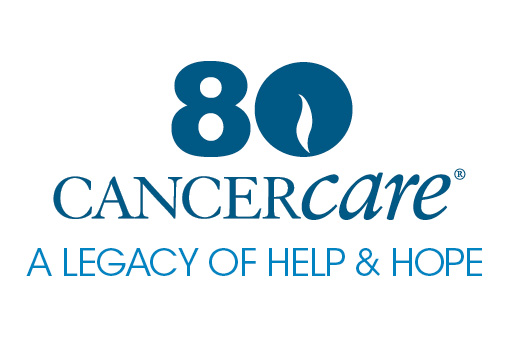Localized or Locally Advanced Prostate Cancer
The most common treatment approaches for men with localized or locally advanced prostate cancer are:
Active surveillance for localized, low-grade prostate cancer (in which the cancer cells look similar to healthy cells). Close monitoring of the status of the prostate cancer through regular office visits and medical tests, including measuring PSA (prostate specific antigen). PSA is a substance produced by the prostate gland which may indicate the presence of cancer.
Surgery. In a prostatectomy, the prostate and nearby tissue is removed, which may include seminal vesicles and lymph nodes.
Cryotherapy. This approach involves the freezing of the tumor to kill cancer cells.
Radiation therapy, which is the use of radiation to kill cancer cells in the prostate. Brachytherapy, in which radioactive material is placed inside the body, is one type of radiation therapy that’s used to treat prostate cancer.
Hormonal therapy may also be given before, during and after radiation therapy. See the next section, “Metastatic Prostate Cancer,” for information on hormonal therapy.
Metastatic Prostate Cancer
Treatments are available for metastatic prostate cancer that can stop cancer growth, control pain and other symptoms and extend survival.
Hormonal therapy. Also called androgen deprivation therapy (ADT), hormonal therapy remains the mainstay for treating metastatic prostate cancer. This type of treatment is aimed at reducing the levels of male hormones (androgens) in the body, or stopping them from affecting prostate cancer cells. The main androgens are testosterone and DHT; they act like a fuel, encouraging prostate cancer to grow. Without androgens, prostate cancer goes into remission, often for many years. (Remission is when all signs and symptoms of cancer disappear.)
Surgery as a form of hormonal therapy. Another way to stop the production of male hormones is an orchiectomy, a surgical procedure in which the testicles are removed. The removal of the testicles causes most prostate cancers to stop growing or to shrink.
Chemotherapy and other treatments. Doctors sometimes recommend chemotherapy as a treatment for hormone-resistant metastatic prostate cancer. One chemotherapy drug is usually given, rather than multiple drugs being given in combination. The drugs typically used are docetaxel (Taxotere) and cabazitaxel (Jevtana).
Combining hormonal therapy with chemotherapy and androgen receptor signaling inhibitors (ARSIs). Depending on the man’s individual circumstances, it is now a standard treatment to give the chemotherapy docetaxel in conjunction with hormone therapy as a first line treatment approach. For men with newly diagnosed metastatic disease, treatment options include:
- ADT alone
- Docetaxel in combination with ADT
- The combination of abiraterone, prednisone and ADT
- The combination of enzalutamide and ADT
- The combination of apalutamide and ADT
- The combination of abiraterone, prednisone, ADT and docetaxel
- The combination of darolutamide, ADT and docetaxel
Abiraterone, enzalutamide, apalutamide and darolutamide are described below. Prednisone is a corticosteroid that controls inflammation.
Other treatment options. A number of other types of drugs have been approved by FDA for metastatic prostate cancer that is no longer responding to hormonal therapy or chemotherapy. These drugs include:
Sipuleucel-T (Provenge). This medication, an immunotherapy, works by using the body’s own specialized white blood cells (important parts of the body’s immune system) to destroy prostate cancer cells. Sipuleucel-T is used in treating men with asymptomatic or minimally symptomatic prostate cancer that is resistant to hormonal therapy.
Abiraterone (Zytiga). Abiraterone blocks an enzyme called CYP17, helping to stop these cells from producing male hormones. It is used with the corticosteroid prednisone.
Enzalutamide (Xtandi). Male hormones can attach to prostate cancer cells, helping them to grow. Enzalutamide blocks this from happening, slowing the growth of (or destroying) prostate tumors.
Radium Ra 223 (Xofigo). Radium Ra 223 is a bone-seeking radioisotope, a drug that contains a radioactive therapy. Approved for the treatment of symptomatic prostate cancer, this drug is injected into the bloodstream and seeks out prostate cancer cells that have spread to the bone.
Apalutamide (Erleada). In September 2019, the FDA approved apalutamide, an anti-androgen drug that blocks male hormones from attaching to prostate cancer cells, which can slow the growth of (or destroy) prostate tumors. Apalutamide was initially approved in 2018 for treatment of non-metastatic, hormonal therapy-resistant prostate cancer.
Darolutamide. In August 2022, the FDA approved darolutamide (Nubeqa) in combination with docetaxel for the treatment of metastatic hormone-sensitive prostate cancer.
Rucaparib (Rubraca) and olaparib (Lynparza). In May 2020, the FDA approved rucaparib and olaparib for the treatment of prostate cancer in men with homologous recombination repair (HRR) gene-mutated metastatic castration-resistant prostate cancer (mCRPC). Both these drugs are PARP inhibitors, which destroy cancer cells by preventing them from repairing their damaged DNA.
Relugolix (Orgovyx). Approved by the FDA in January 2021, relugolix is an oral hormonal agent that reduces testosterone levels in men with advanced prostate cancer.
Lu 177 vipivotide tetraxetan (Pluvicto). In March 2022, the FDA approved lu 177 vipivotide tetraxetan for the treatment of prostate-specific membrane antigen positive mCRPC that was previously treated with an anti-androgen drug and taxane-based chemotherapy. Lu 177 vipivotide tetraxetan combines a targeting compound (ligand) with a therapeutic radioisotope (a radioactive particle).
Newer combination treatments:
In May 2023, the FDA approved olaparib (Lynparza) with abiraterone (Zytiga) and prednisone for the treatment of BRCA-mutated mCRPC.
In June 2023, the FDA approved talazoparib (Talzenna) with enzalutamide (Xtandi) for the treatment of HRR gene-mutated mCRPC.
In August 2023, the FDA approved a dual action tablet containing niraparib and abiraterone acetate (Akeega) with prednisone for the treatment of BRCA-mutated mCRPC.
